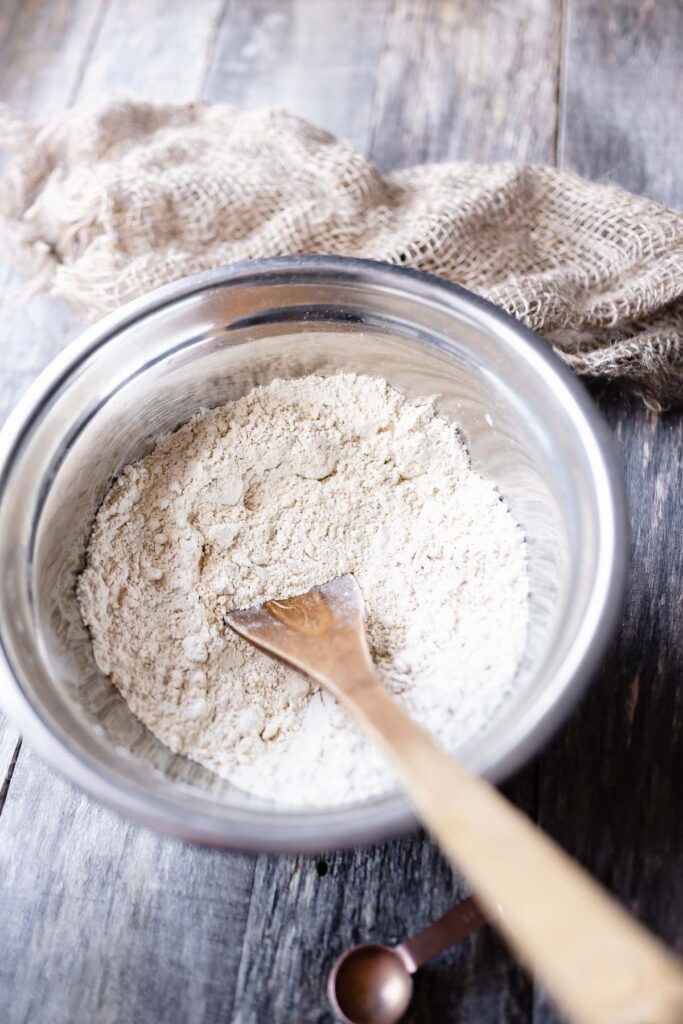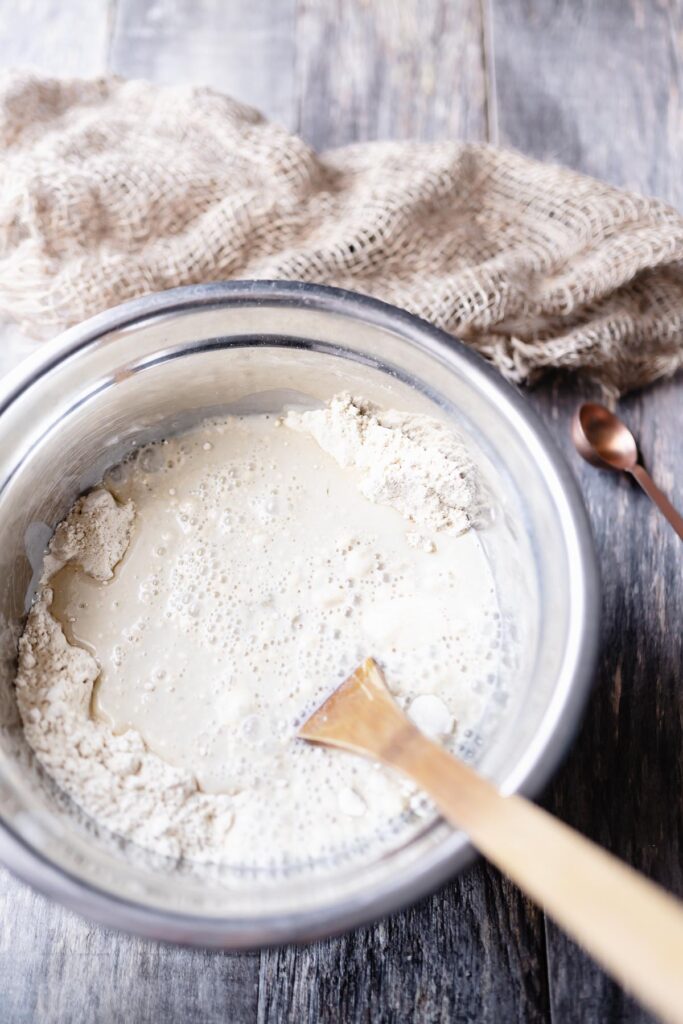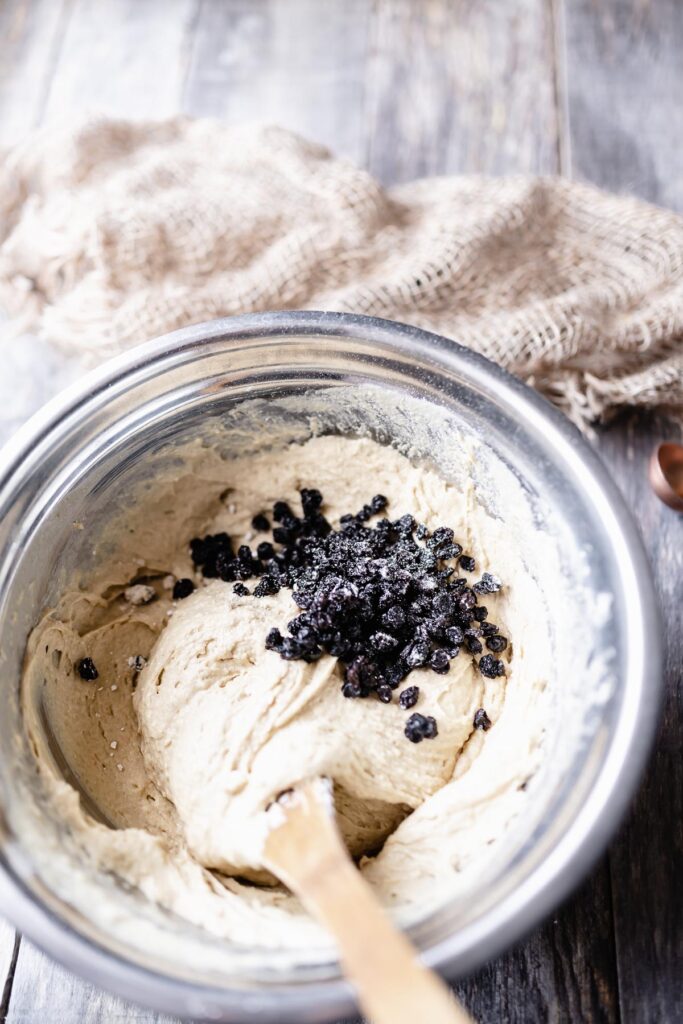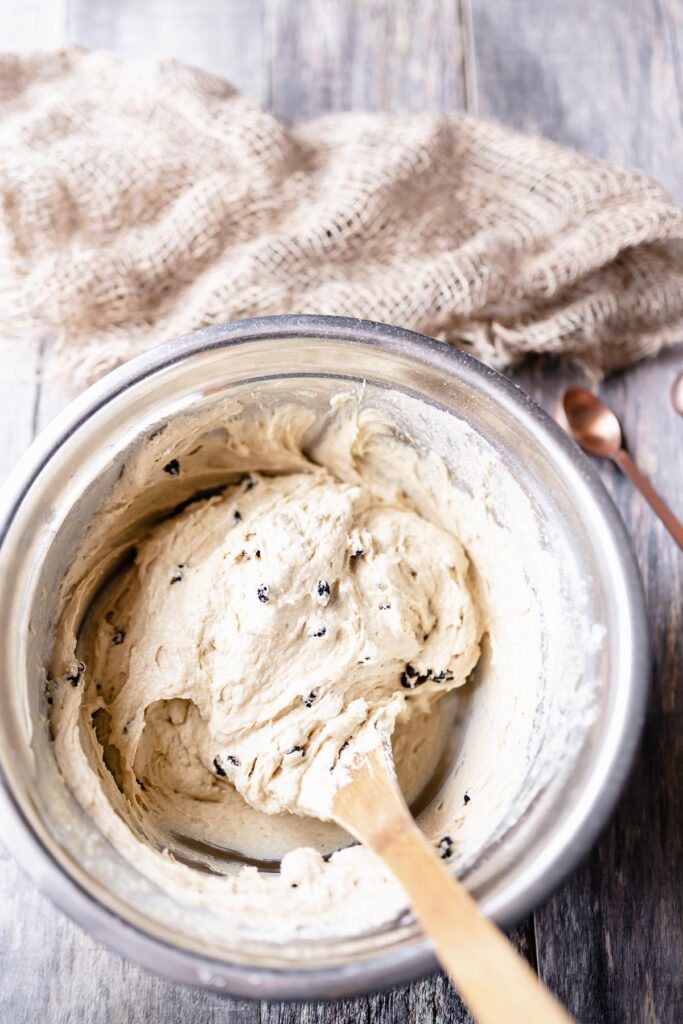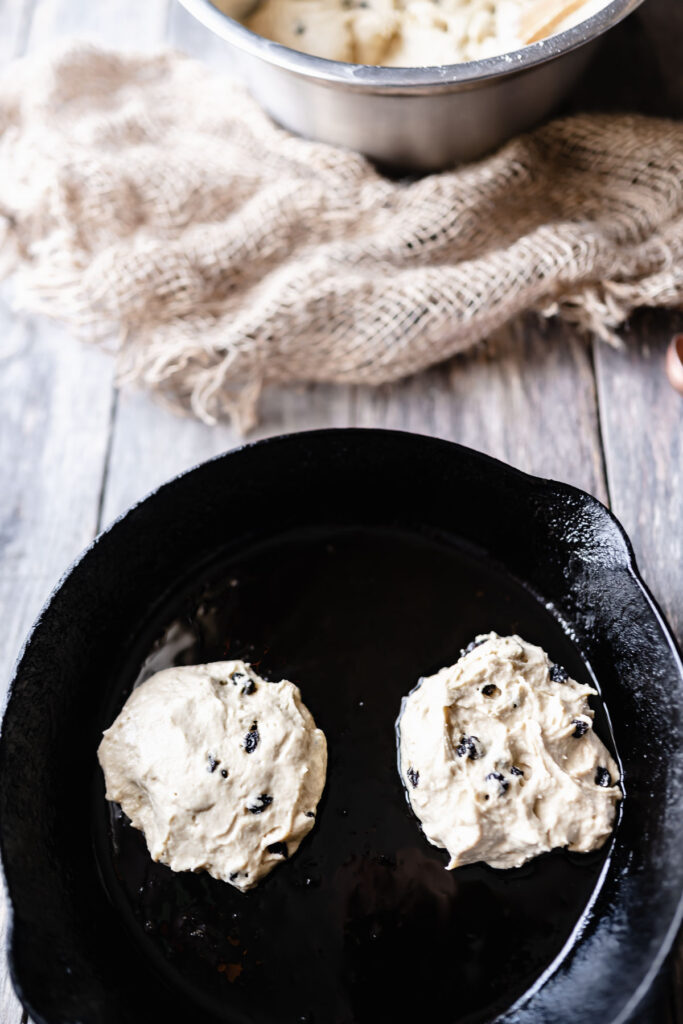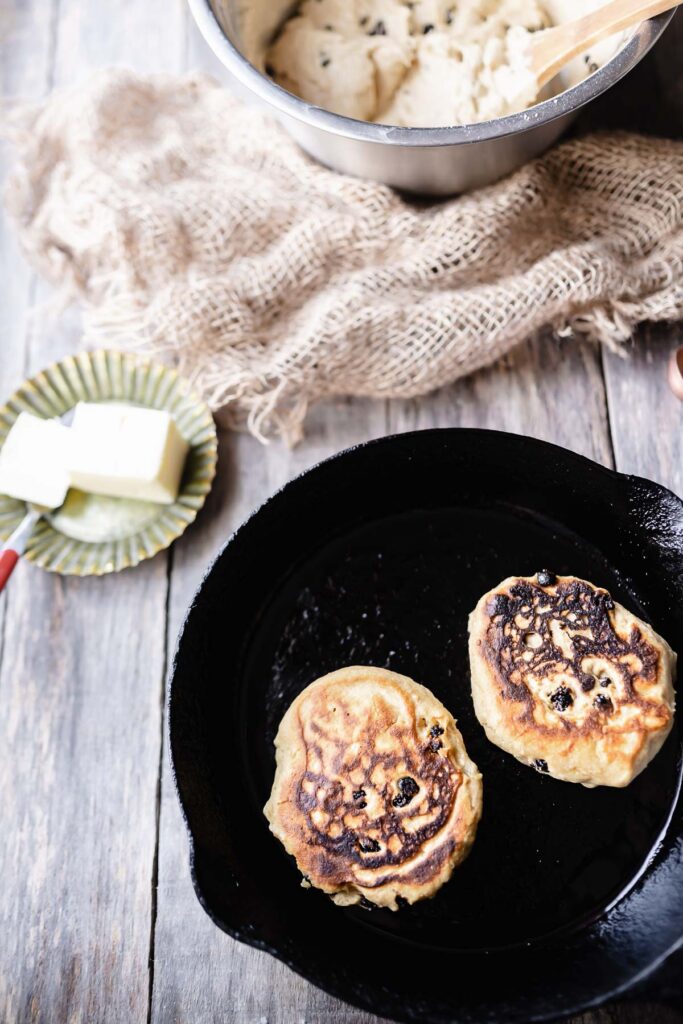Easy Gluten-Free Bannock Bread Recipe (Vegan)
Make your own easy gluten-free bannock bread rolls in no time! This traditional Scottish bread with variations in Northern England and Ireland is also vegan, plant-based and yeast-free.
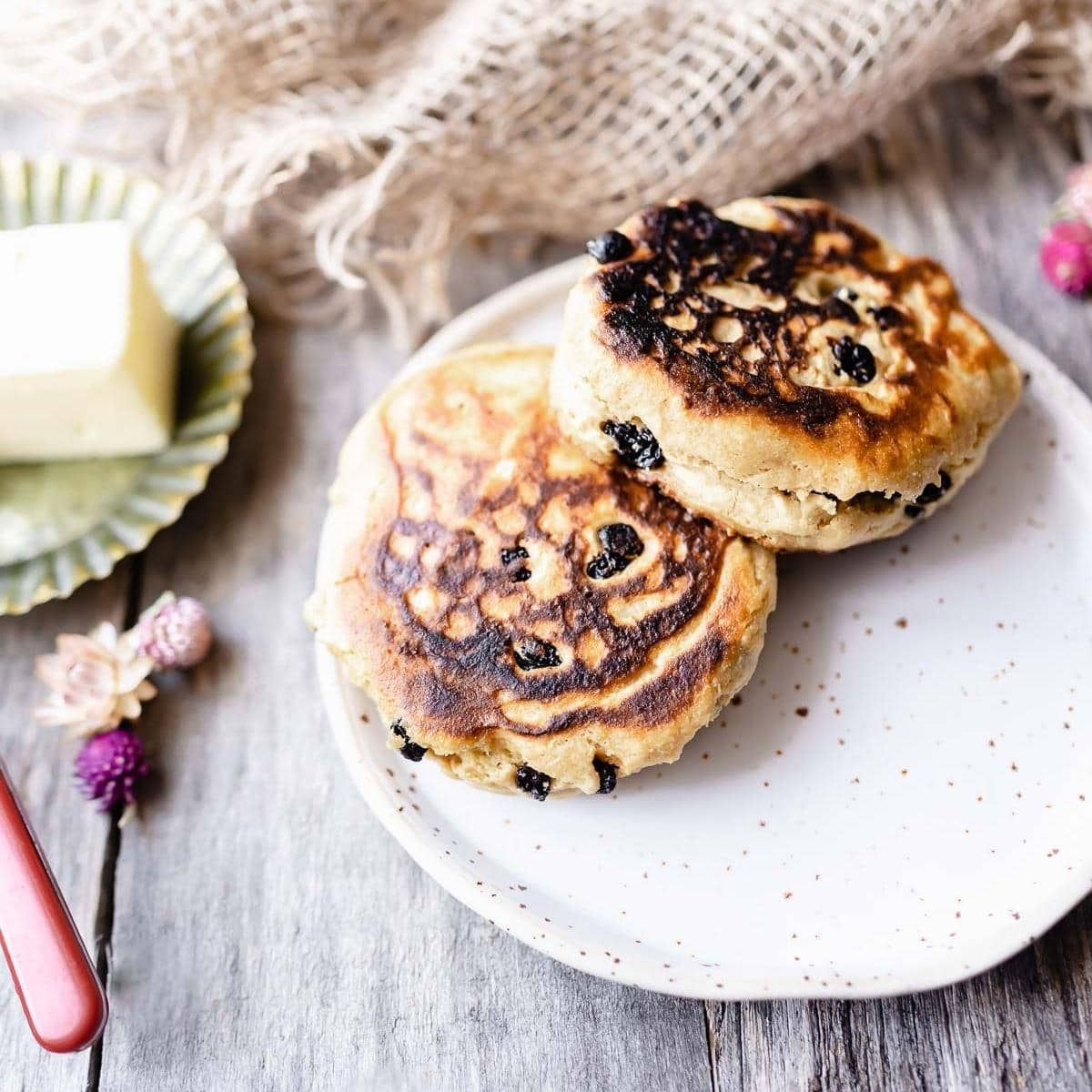
What is Bannock Bread?
Bannocks are simple, quick flat breads traditionally made in Scotland, Northern England and Northern Ireland. They often contain oats in one form or another and can be made on a griddle, stovetop, oven or over an open campfire.

Why This Recipe Works
- Super quick and easy to make.
- Uses a yeast-free, no-knead dough.
- This great recipe is delicious as is or easily customized with add-ins to suit your tastes.
- Gluten-free, nut-free, soy-free, yeast-free, dairy-free, vegan and refined sugar-free.
- It’s truly hard to believe this bread if gluten-free — it has an amazing texture!
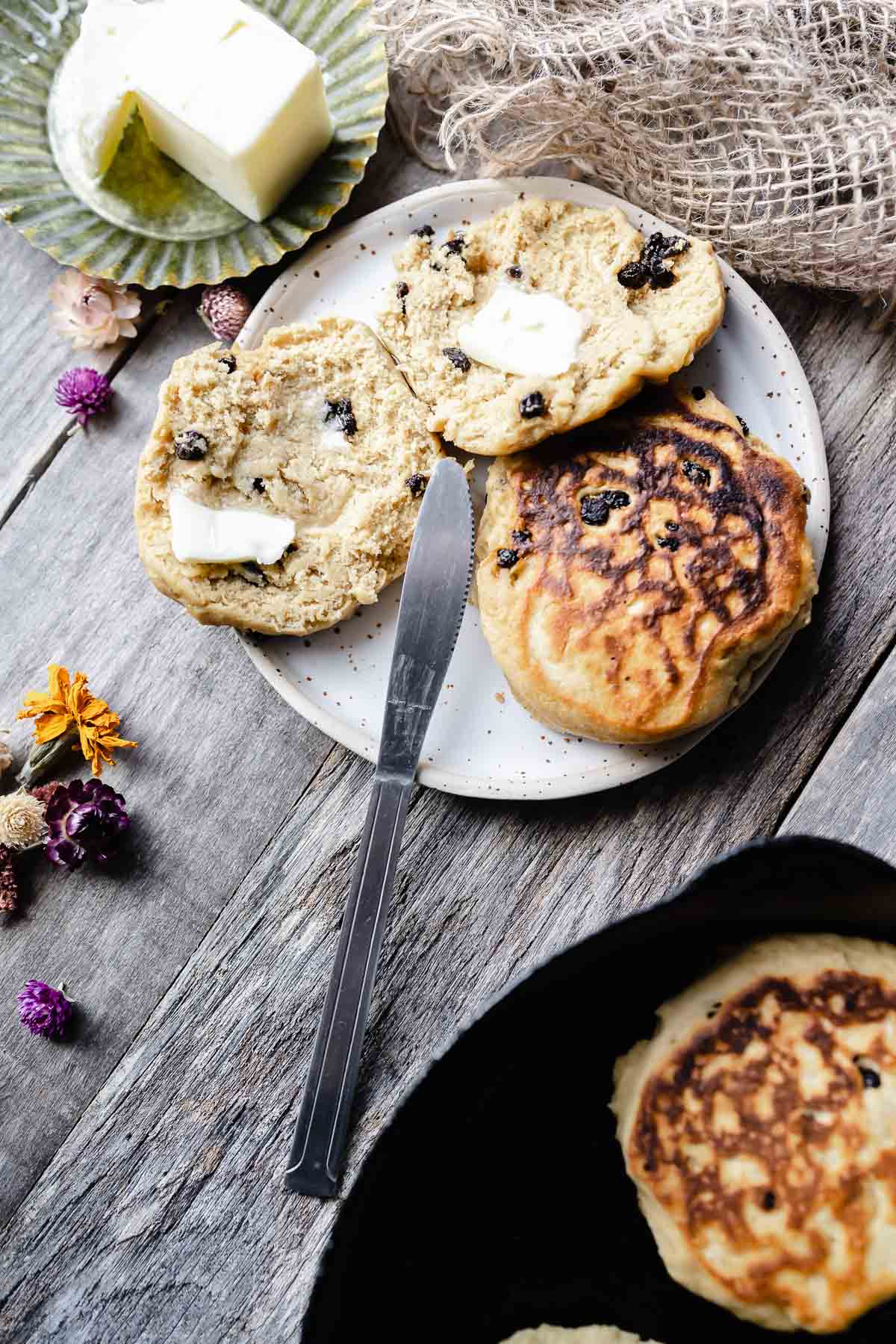
Ingredient Notes
Oat flour: Traditional bannock recipes often contain oats or Scottish oats, which are oats ground into a meal, which is very much like a flour. We use oat flour for ease, convenience and a wonderfully fluffy texture.
Garbanzo bean flour: Also traditionally, pea flour was also sometimes used. Being a legume as well, garbanzo bean flour (chickpea flour) does the trick in much the same way and also adds some healthful touch with the addition of some fiber and protein.
Gluten-free all-purpose flour: The slightest bit of xanthan gum found in a gluten-free all purpose flour mixture, is just enough to add additional binding power to this recipe, as well as flavor.
Baking soda: Some traditional bannock recipes use baking powder as a leavening agent and sometimes even sourdough discard. Due to the nature of gluten-free flour, I find the baking soda and vinegar combo to give the best results.
Coconut sugar: I like adding a small touch of to help round out the flavors a bit, but it is a completely optional ingredient. Alternatively, it can be replaced with any sweetener you prefer – maple syrup, honey, cane sugar, raw sugar, etc. will work.
Salt: Salt simply brings out all of the flavors of this bread recipe.
Dried currants: This is a completely optional ingredient but really adds some nice texture and flavor. Find some other optional add-in ingredient ideas further down in the post.
Plant-based milk: I love to use oat milk in this recipe, as it is thick and creamy, not unlike traditional milk. You can use regular dairy-milk or any vegan milk you prefer.
Vinegar: A touch of vinegar when combined with the baking soda gives lift and rise to this bannock recipe.
Oil spray: Oil spray or a touch of oil in the pan will help ensure the bannocks do not stick and also turn golden brown.
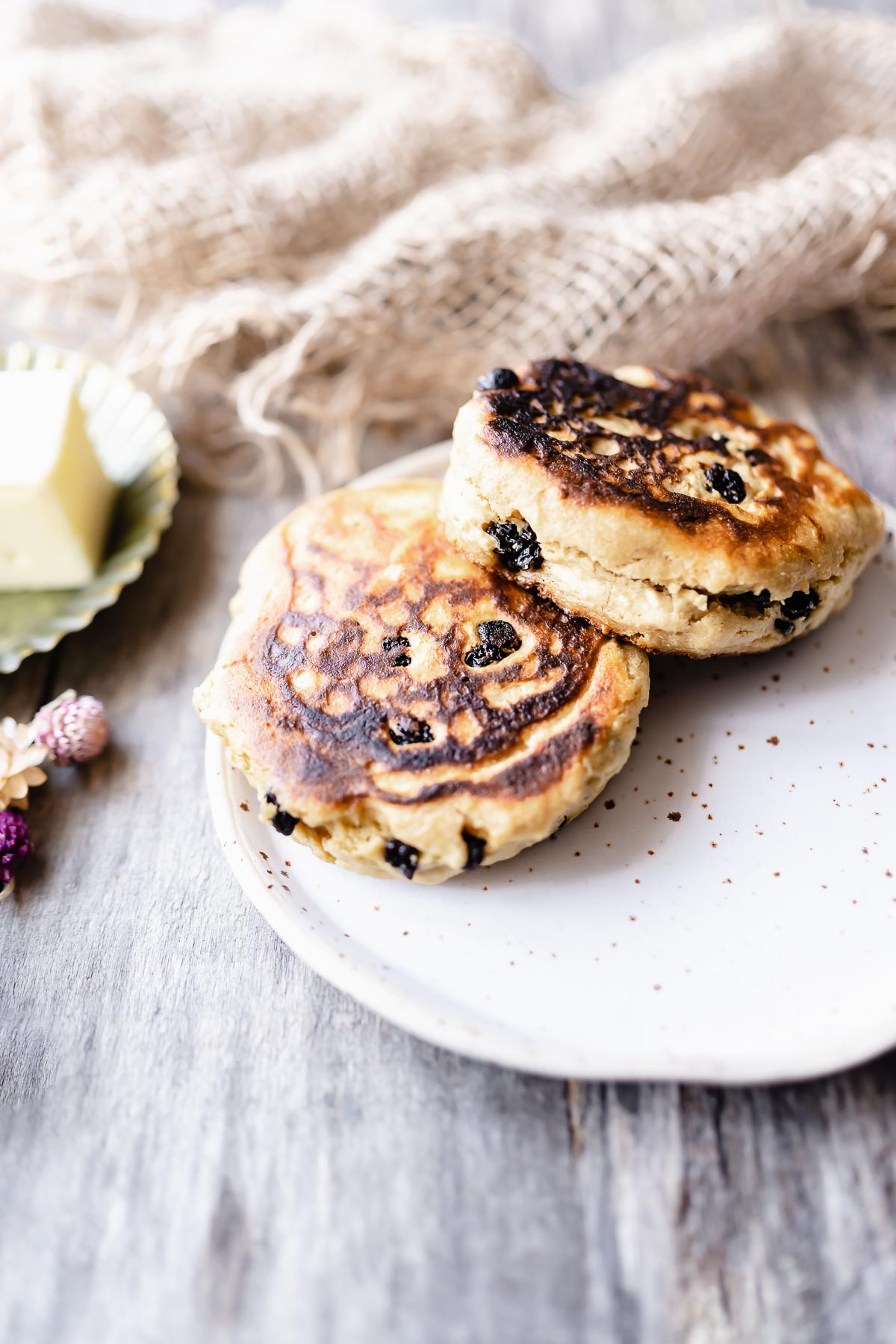
How-to Make
- Preheat a cast iron skillet, griddle or non-stick skillet over medium-low heat on the stove.
- In a large bowl, combine the dry ingredients. Stir well. In a separate bowl, combine the wet ingredients. Whisk well.
- Pour the wet ingredients into the dry ingredients. Mix well until a uniform dough forms. Fold in the currants, if using.
- Spray the preheated pan with a little oil or add some oil to coat. Using wet hands, grab a tennis ball-sized portion of dough and pat into a 4-inch round. Place into the hot pan and cook for 3-4 minutes, flip and cook 3-4 minutes longer, or until each side is golden brown and center of the bread feels firm. Repeat with the remaining dough. Alternatively, you can make bannocks by placing all of the dough into the pan, frying, flipping, cooking further, then slicing into wedges (also known as farls).
- Serve warm and enjoy!
How-to Serve
Slice a bannock open and enjoy as is, with a dab of butter, a drizzle of honey or maple syrup or a pat of jam. Gluten-free bannock bread is great served alongside soup, too!
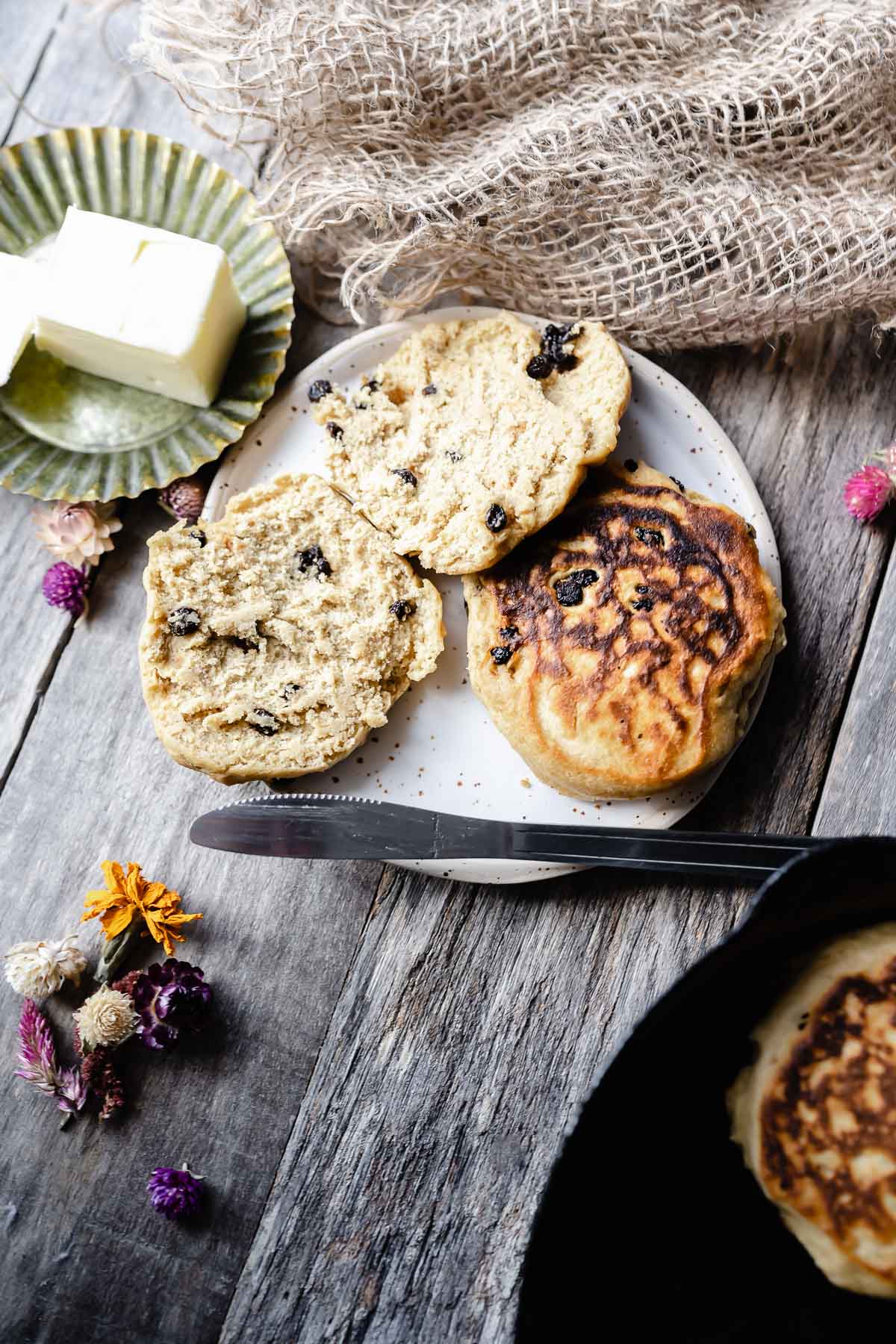
Variations
You can make this with or without dried currants as discussed in the recipe, however, there are lots of different ways you can enjoy a delicious bannock roll, including:
- With a sweet spice mix such as nutmeg, cloves, cinnamon and ginger.
- With a savory spice mix such as paprika, cumin and oregano.
- With a handful of a variety of dried fruit mixed in. Dried cherries, cranberries, raisins and apricots work great.
- With a handful of nuts or seeds thrown in.
- With some grated cheese and garlic powder, for a quick and easy garlic cheese bread.
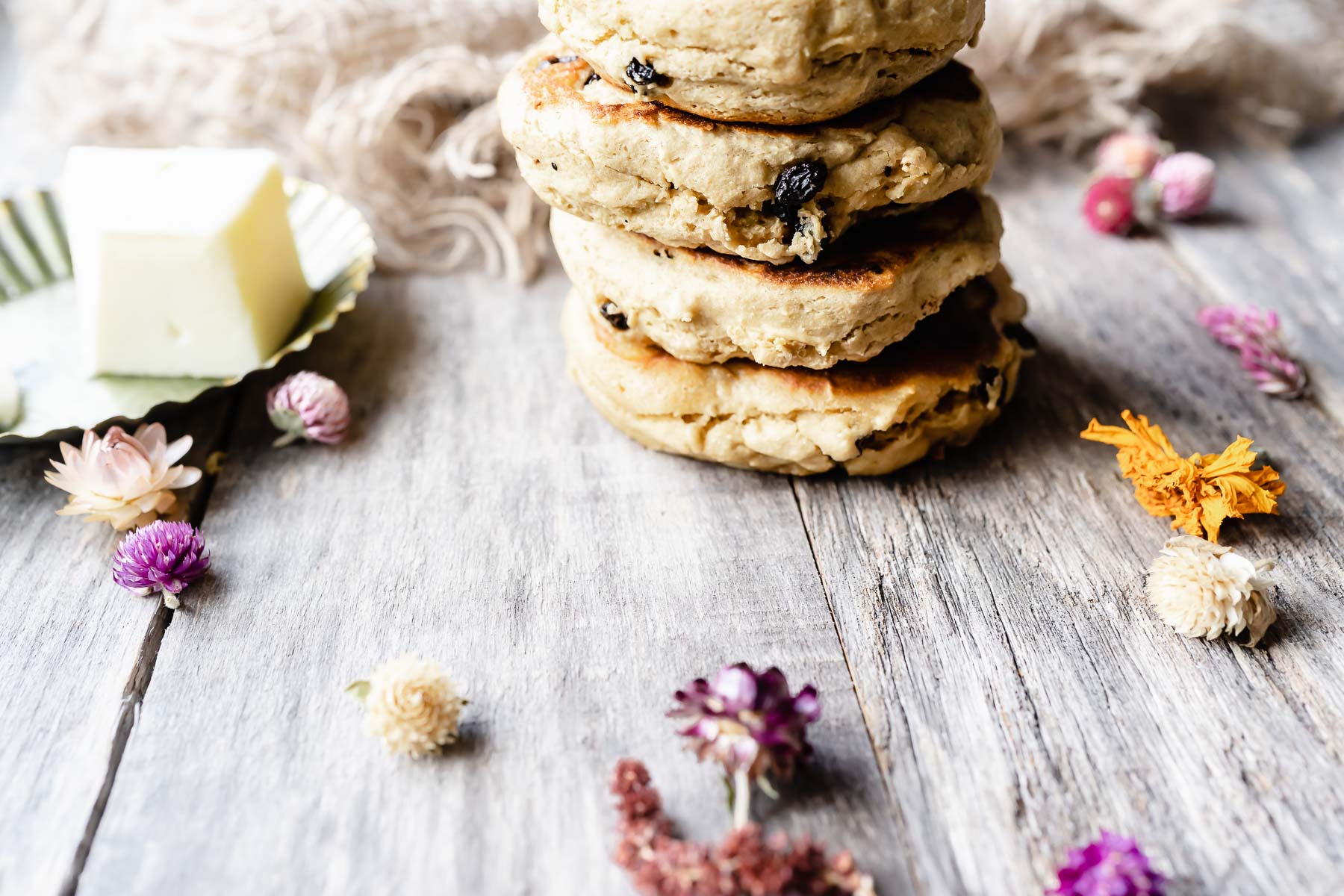
Storing and Reheating
This bannock recipe tastes best fresh and warm, however, you can keep them stored in an airtight container in the refrigerator for about 5 days. To reheat, I recommend slicing them and heating cut side down in a skillet over medium heat until warm. Alternatively bannocks taste great reheated in a toaster, too!

More Gluten-Free Bread Recipes
Gluten Free Barmbrack (Irish Tea Bread)
Gluten Free Pan de Yuca (Ecuadorian Cheese Bread)
The Best Homemade Gluten-Free Vegan Bread
![Easy Gluten-Free Bannock Bread Recipe [Vegan]](https://moonandspoonandyum.com/wp-content/uploads/2022/01/Pinterest-Pin-Templates-Moon-and-Spoon-and-Yum-1200-x-1200-px-64-300x300.jpg)
Gluten Free Bannocks Recipe [Vegan]
Ingredients
- 1 ½ cups oat flour you can also make your own by grinding oats in a food processor
- 1 cup garbanzo bean flour also known as chickpea flour
- ¾ cup gluten free all purpose flour blend use a blend with xanthan gum
- 1 teaspoon baking soda
- 1 teaspoon granulated sugar I like coconut sugar
- ¼ teaspoon salt
- 2 cups milk of choice I like to use oat milk
- 1 tablespoon vinegar white or apple cider
- ½ cup dried currants optional
- oil to coat pan
Instructions
- In a large mixing bowl, combine the oat flour, garbanzo bean flour, all purpose flour, baking soda, sugar and salt. Mix well.
- In another bowl, combine the milk and vinegar. Stir well.
- Pour the wet ingredients into the dry ingredients, then mix well until a uniform dough forms. The dough will be slightly wet and tacky (that is okay!).
- Fold the dried currants into the batter, if using.
- Heat a cast iron skillet, griddle or nonstick skillet over medium-low heat. Spray with oil or add just enough to coat.
- Using wet hands or an ice cream scoop, take a tennis ball-sized dollop of batter and pat into a 4-inch round cake that is 1/4-inch-1/2-inch thick.
- Place into the greased skillet and cook for 3-4 minutes or until the edges are turning golden. Flip and cook 3-4 minutes longer until both sides have browned and the middle feels firm. Repeat with the remaining batter.
- Serve warm and enjoy!
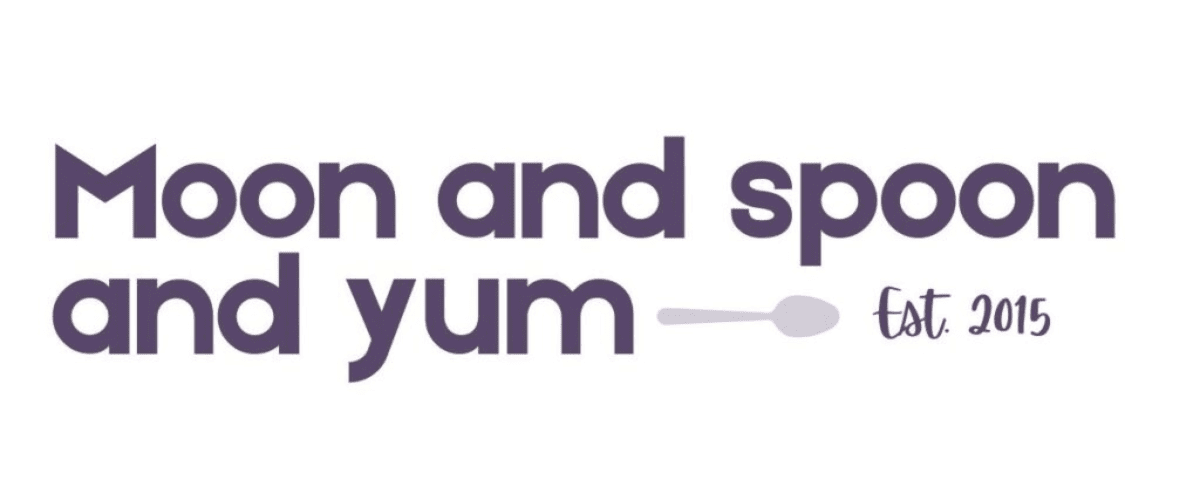
![Easy Gluten-Free Bannock Bread Recipe [Vegan]](https://moonandspoonandyum.com/wp-content/uploads/2022/01/Pinterest-Pin-Templates-Moon-and-Spoon-and-Yum-21-465x1024.jpg)
